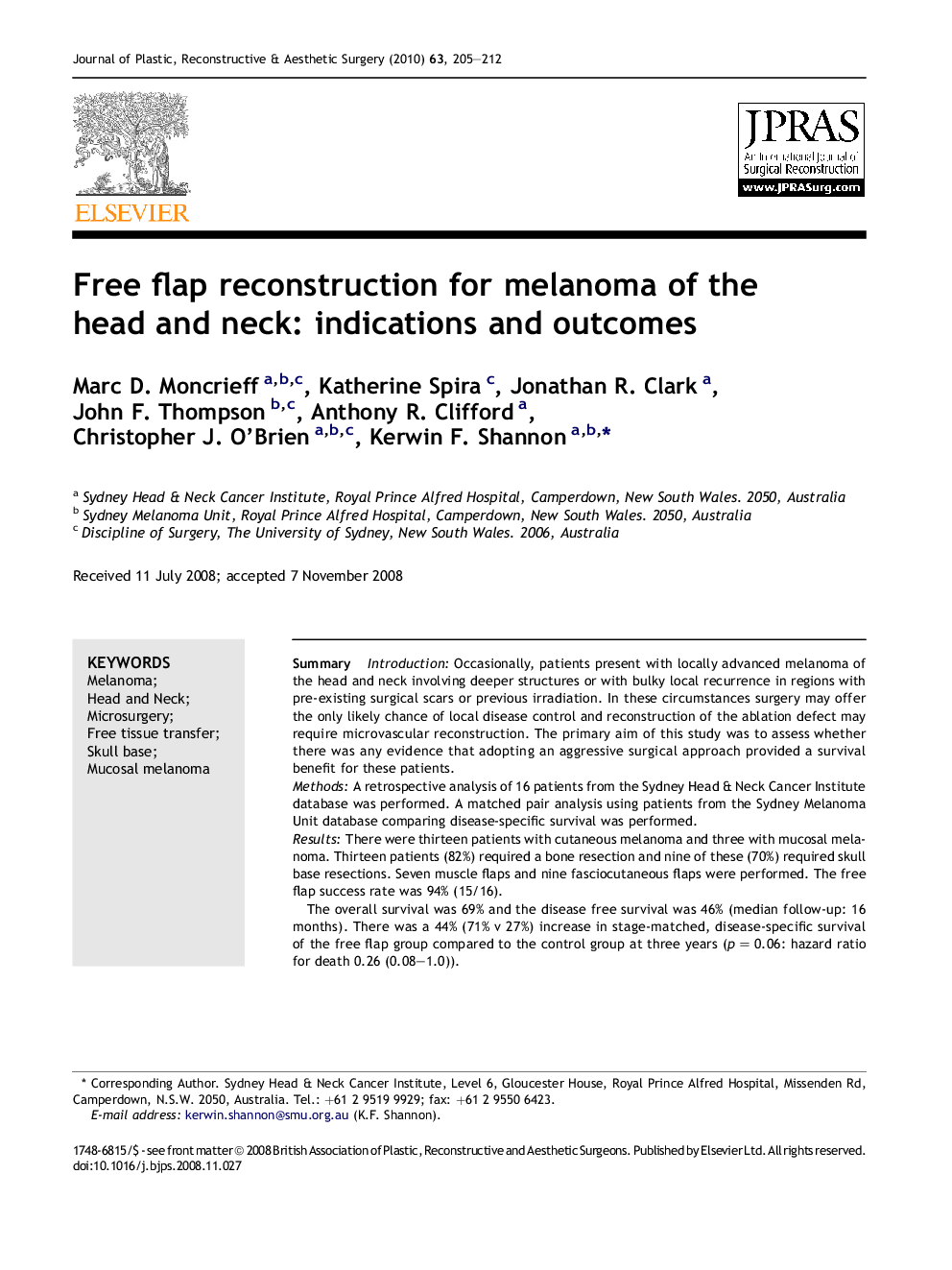| Article ID | Journal | Published Year | Pages | File Type |
|---|---|---|---|---|
| 4120159 | Journal of Plastic, Reconstructive & Aesthetic Surgery | 2010 | 8 Pages |
SummaryIntroductionOccasionally, patients present with locally advanced melanoma of the head and neck involving deeper structures or with bulky local recurrence in regions with pre-existing surgical scars or previous irradiation. In these circumstances surgery may offer the only likely chance of local disease control and reconstruction of the ablation defect may require microvascular reconstruction. The primary aim of this study was to assess whether there was any evidence that adopting an aggressive surgical approach provided a survival benefit for these patients.MethodsA retrospective analysis of 16 patients from the Sydney Head & Neck Cancer Institute database was performed. A matched pair analysis using patients from the Sydney Melanoma Unit database comparing disease-specific survival was performed.ResultsThere were thirteen patients with cutaneous melanoma and three with mucosal melanoma. Thirteen patients (82%) required a bone resection and nine of these (70%) required skull base resections. Seven muscle flaps and nine fasciocutaneous flaps were performed. The free flap success rate was 94% (15/16).The overall survival was 69% and the disease free survival was 46% (median follow-up: 16 months). There was a 44% (71% v 27%) increase in stage-matched, disease-specific survival of the free flap group compared to the control group at three years (p = 0.06: hazard ratio for death 0.26 (0.08–1.0)).ConclusionsFor carefully selected patients with locally advanced melanoma of the head and neck an aggressive surgical approach, including radical resection and reconstruction with free tissue transfer, may be indicated to provide disease control and short-term survival benefit.
